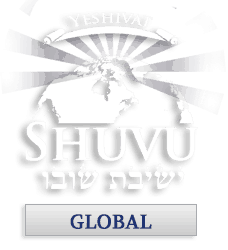וְזֹ֥את תּוֹרַ֖ת זֶ֣בַח הַשְּׁלָמִ֑ים אֲשֶׁ֥ר יַקְרִ֖יב לַֽיהֹוָֽה: אִ֣ם עַל־תּוֹדָה֘ יַקְרִיבֶ֒נּוּ֒ וְהִקְרִ֣יב | עַל־זֶ֣בַח הַתּוֹדָ֗ה חַלּ֤וֹת מַצּוֹת֙ בְּלוּלֹ֣ת בַּשֶּׁ֔מֶן וּרְקִיקֵ֥י מַצּ֖וֹת מְשֻׁחִ֣ים בַּשָּׁ֑מֶן וְסֹ֣לֶת מֻרְבֶּ֔כֶת חַלֹּ֖ת בְּלוּלֹ֥ת בַּשָּֽׁמֶן: עַל־חַלֹּת֙ לֶ֣חֶם חָמֵ֔ץ יַקְרִ֖יב קָרְבָּנ֑וֹ עַל־זֶ֖בַח תּוֹדַ֥ת שְׁלָמָֽיו: וְהִקְרִ֨יב מִמֶּ֤נּוּ אֶחָד֙ מִכָּל־קָרְבָּ֔ן תְּרוּמָ֖ה לַֽיהֹוָ֑ה לַכֹּהֵ֗ן הַזֹּרֵ֛ק אֶת־דַּ֥ם הַשְּׁלָמִ֖ים ל֥וֹ יִֽהְיֶֽה: וּבְשַׂ֗ר זֶ֚בַח תּוֹדַ֣ת שְׁלָמָ֔יו בְּי֥וֹם קָרְבָּנ֖וֹ יֵֽאָכֵ֑ל לֹֽא־יַנִּ֥יחַ מִמֶּ֖נּוּ עַד־בֹּֽקֶר: וְהַנּוֹתָ֖ר מִבְּשַׂ֣ר הַזָּ֑בַח בַּיּוֹם֙ הַשְּׁלִישִׁ֔י בָּאֵ֖שׁ יִשָּׂרֵֽף:
And this is the law of the peace offering, which he shall bring to the Lord. If he is bringing it as a thanksgiving offering, he shall offer, along with the thanksgiving offering unleavened loaves mixed with oil, unleavened wafers anointed with oil, and scalded flour mixed with oil. Along with loaves of leavened bread, he shall bring his offering along with his thanksgiving peace offering. And he shall bring from it one out of each offering, as a separation for the Lord; the kohen who dashes the blood of the peace offering it shall be his. And the flesh of his thanksgiving peace offering shall be eaten on the day it is offered up; he shall not leave any of it over until morning. But if his sacrifice is a vow or a voluntary donation, on the day he offers up his sacrifice it may be eaten, and on the next day, whatever is left over from it, may be eaten. However, whatever is left over from the flesh of the sacrifice on the third day, shall be burnt in fire.
Leviticus 6:11-17
This week’s Torah portion continues with the Torat Cohanim, the instruction to the priests. The proper method for offering the Olah and the Mincha are given. The Olah is frequently translated as burnt offering, but this is a misnomer. Olah actually means going up. The Mincha, or meal offering, is also described. In these two offerings, Hashem has his portion, the fat of the kidneys or the handful of meal, which is burnt on the fire of the altar. The Kohayns are also given their portion to eat. For the Mincha, the Kohayns portion is all the meal offering, except the handful that is burnt. For the Olah, the Kohayns eat the meat.
The Shlamim, the peace offerings, for drawing near to Hashem, are divided into two categories, the Todah or thanksgiving offering, and the Nadavah or Vow/voluntary offering. Both of these are Shlamim and are offered on the south side of the altar. For the peace offering, Hashem is given his part, the smoke from the fat of the kidneys; the Kohayn is given his part to eat, and the bringer of the offering is given his part to eat. This offering is called the peace, or completion offering, because all three parties have their portion. The Shlamim are a method of drawing near to God. It is not required; it is strictly voluntary. If one wishes one may bring a Todah. If one wishes one may bring a Nadavah. But, they are strictly voluntary. There is no commandment to bring a peace offering, there is only a commandment in how to bring a peace offering if one desires to do so. The peace offering is how we draw near to Hashem in unity. Shabbat shalom.
